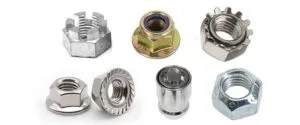Worried about bolts failing in your project? You’re not alone. Bolt shear strength can either hold your design together or lead to serious failures—sometimes even dangerous ones! In this post, I’ll explain what bolt shear strength is, how it differs from tensile strength, and why it matters for your applications. We’ll also touch on how to calculate it and the factors that affect it.
Want to understand what happens when a bolt fails under shear?
👉 Read more: What Is Shear Failure in Bolts?
What is the Shear Strength of a Bolt?
Shear strength refers to how well a material resists forces that cause parts of it to slide past each other.
For bolts, Shear strength means how much sliding force a bolt can withstand before it breaks for bolts. Picture two metal plates held together by a bolt. If the plates try to slide apart, the bolt’s ability to resist this force is its shear strength.
Engineers often estimate that the shear strength of a bolt is about 60% of its tensile strength. However, some studies show this can range from 58% to 62%, depending on factors such as material type, environmental conditions, and the specific bolt grade.
Shear Strength vs. Tensile Strength
You may have heard about tensile strength, but how does that compare to shear strength? Well, they’re not the same thing, though they both measure how much stress a material can take.
Shear strength measures how well a bolt can resist a sliding force. Tensile strength, on the other hand, is the measure of how much force a bolt can handle when being pulled apart. Think of it like this: shear strength is about sideways pressure, while tensile strength is about straight pulling.
For most materials, tensile strength is higher than shear strength. This is because materials are generally better at resisting pulling forces than sliding forces. When designing a connection, knowing whether the bolt will face more tensile or shear forces will help you select the right type. Here’s a comparison to make it clearer:
| Property | Shear Strength | Tensile Strength |
|---|---|---|
| Force Type | Shear (parallel to bolt’s axis) | Tension (pulling along bolt’s axis) |
| Typical Ratio | 60% of tensile strength | Usually higher |
| Applications | Bolted connections, structural supports | Suspension systems, tension rods |
How to Calculate Shear Strength?
Calculating the shear strength of a bolt is not as complex as it sounds. Here’s a simple formula you can use:Vf=0.6×fu×AV_f = 0.6 \times f_u \times AVf=0.6×fu×A
Where:
- VfV_fVf = Shear strength
- fuf_ufu = Minimum tensile strength of the bolt
- AAA = Cross-sectional area being sheared
Let’s break it down with an example. For a common Grade 5 bolt with a tensile strength of 120,000 psi, the approximate shear strength would be:Vf=0.6×120,000=72,000 psiV_f = 0.6 \times 120,000 = 72,000 \text{ psi}Vf=0.6×120,000=72,000 psi
Here’s a quick guide to some common bolt grades:
| Bolt Grade | Tensile Strength (psi) | Approx. Shear Strength (psi) |
|---|---|---|
| Grade 2 Bolt | 74,000 | 44,400 |
| Grade 5 Bolt | 120,000 | 72,000 |
| Grade 8 Bolt | 150,000 | 90,000 |
| Stainless Steel (304/316) | 75,000 | 45,000 |
This formula provides an approximation, but it’s always a good idea to consult with your supplier, such as us here at Hengrui, to ensure that you are working with the exact numbers for your project.
The shear strength of a 3/8-inch bolt varies based on its grade. For a Grade 8 bolt, the shear strength is approximately 6,975 pounds, derived from the bolt’s tensile strength of about 11,625 pounds.
What Impacts Shear Strength in Bolts?
Several factors can affect a bolt’s shear strength, making it essential to consider the following when choosing your fasteners:
- Material Composition: Different materials, such as stainless steel or alloy steel, have varying molecular structures that affect their shear resistance. For example, carbon steel may offer higher strength than aluminum alloys.
- Loading Conditions: The direction and magnitude of applied loads can influence shear strength significantly. Complex structures often face multi-directional forces, which require more detailed load analysis.
- Environmental Factors: Conditions like humidity, temperature, and exposure to corrosive elements (e.g., saltwater) can weaken a bolt’s shear strength over time. Coatings like zinc plating or hot-dip galvanization can help protect bolts in harsh environments.
Practical Applications of Shear Strength in Engineering
- Structural Design: In construction, bolts are used to hold beams and other components together. If the shear strength is too low, those beams could shift, causing the entire structure to weaken.
- Geotechnical Engineering: Shear strength is essential when evaluating soil stability, which affects everything from foundations to retaining walls.
- Material Selection: When designing a new product, engineers must select materials with the appropriate shear strength to ensure durability and safety.
Understanding shear strength helps engineers design connections that can handle the forces they will face. This prevents bolts from failing, which could cause serious problems like equipment breakdown or even a structure collapsing.
Conclusion
Understanding the shear strength of a bolt can be the key to your project’s success. Whether you’re constructing a skyscraper or putting together a wind turbine, choosing the right bolt is crucial.
At Hengrui, we ensure every bolt we provide is strong enough for the job. If you’re not sure which bolt you need, feel free to ask. We’re always here to help with your fastener needs—let’s keep everything secure together.






